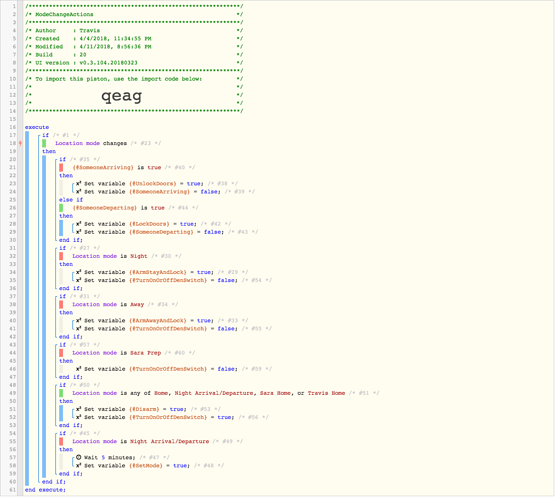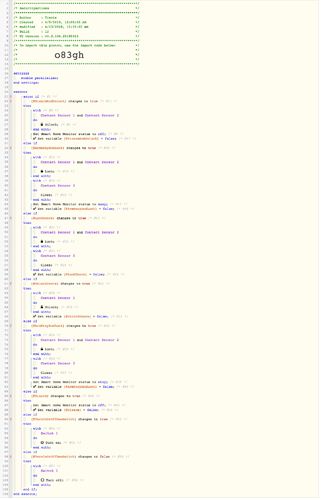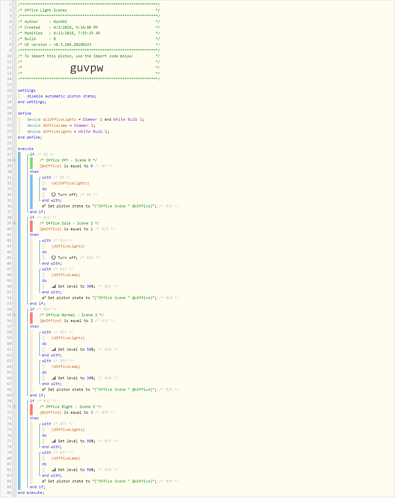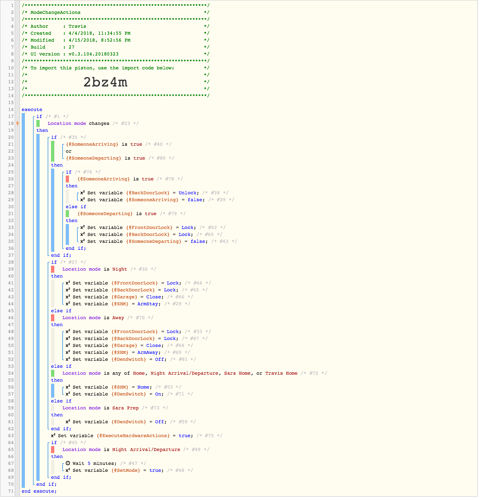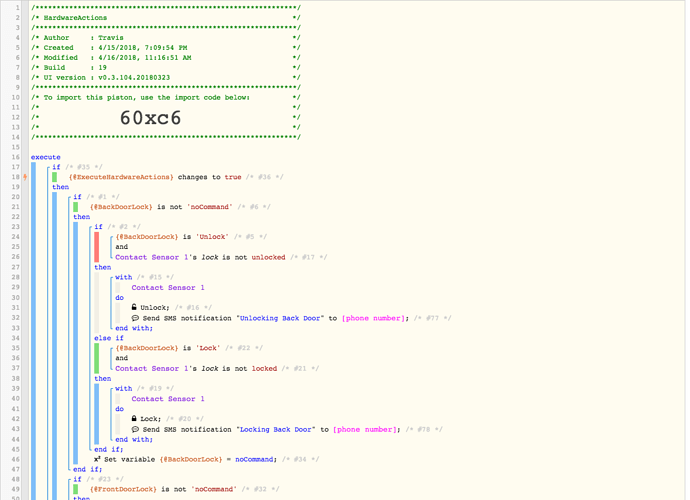1) Give a description of the problem
I have one piston that will set global variables (one after another) to boolean values. In another piston I use “wait for X to change to true”. The problem is that all the hardware actions that are tied to the global variables are in the same piston so I’m not sure if what I’m trying to do is possible? I have enabled parallelism and Async IF.
2) What is the expected behavior?
The expected behavior is that the hardware actions should fire but it doesn’t seem to be the case.
3) What is happening/not happening?
(PUT YOUR INFO HERE)
**4) Post a Green Snapshot of the piston!
5) Attach any logs (From ST IDE and by turning logging level to Full)
(PASTE YOUR LOGS HERE BETWEEN THE MARKS THEN HIGHLIGHT ALL OF THE LOGS SND CLICK ON THE </> ICON TO FORMAT THEM)
REMOVE BELOW AFTER READING
If a solution is found for your question then please mark the post as the solution.

